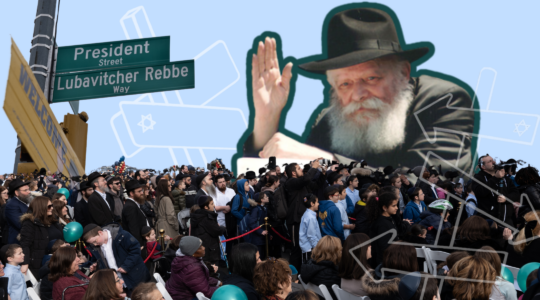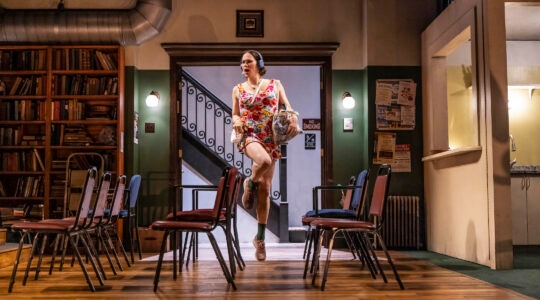Dance, fashion, song and spectacle: the enduring vibrancy of Israeli culture is evident as a difficult, war-torn summer gives way to a fall of welcome distractions.
Around the country, fall’s artistic highlights have a distinctly international bent — bringing home once again how cosmopolitan Israeli culture has become. Especially in Jerusalem, visitors who once would have come largely for the spiritual and religious can increasingly delve into multicultural and secular attractions in the Middle East’s most progressive corner.
Perhaps no event illustrates the modern, poly-ethnic spirit as much as September’s Jerusalem Sacred Music Festival, which ushers in fall with a significantly expanded program of concerts. In a season roiling with ethnic tensions and failed communication, the festival’s message is more relevant than ever — a celebration of Jerusalem’s 3,000-year history as a source of inspiration to creative spirits, and, as its organizers emphasize, a paean to peace, tolerance and brotherhood.
Itay Mautner, artistic director of the Jerusalem Season of Culture — of which the festival is a part — called the event “a harmonious island of sanity” whose importance is underlined by current events. “For just a few days, we hope Jerusalem can be the city it was prophesized to be,” Mautner said, “a house of prayer for all peoples. And as preparations peak for this event, we all hope and believe that this festival will bring a little light into these dark times.”
The diverse international lineup features Naná Vasconcelos of Brazil; Morocco’s Orchestre Chabab Al Andalous; Jamaica’s Twinkle Brothers; several musicians from across Africa; and an act familiar to U.S. audiences: Joshua Nelson and the Klezmatics, among others. “The festival places great emphasis on the importance of listening, gaining exposure to world outlooks that are not part of our daily lives,” Mautner said. “We have great faith in the power of music to bring about change and to open up even the most stubborn hearts.”
A highlight of the festival, which runs Sept. 9-12, is the Night Stroll, when the Old City comes alive with after-dark musical encounters that echo against the ancient stone. Gil Ron Shama, co-artistic director of the festival — and himself a global nomad, with parents from Cairo and Vilna — waxed rhapsodic about the inspiration he draws from Jerusalem: “The meeting of mountain and desert; natural and urban; hills and springs … It is a city that is incredibly wise, aged, ancient and stubborn.” (jersualemseason.com/en)
The complex story of Jews worldwide is the focus at Beit Hafutsot – The Museum of the Jewish People, which is undergoing a major renewal project at its Tel Aviv campus. By the end of 2014, Jews everywhere will be able to explore their genealogical and communal roots through BH’s online database — one way the museum hopes to engage its visitors more globally.
Another way is the new museum itself, which is slated to open in 2017 with an emphasis on contemporary Jewish life and identities. Meanwhile, this fall, two special exhibitions focus on Jewish contributions to global pop culture. “Dream Weavers” is a fashionable, couture-filled look at the evolution of Jewish tailoring from the humble storefront to the ranks of Ralph Lauren, Donna Karan, Marc Jacobs and Michael Kors.
And the glamour doesn’t stop there. “Amy Winehouse: A Family Portrait” is an intimate look at how the late, great British soul singer was shaped by her Jewish family upbringing, in an exhibition conceived with input from the Winehouse family. (bh.org/il)
Mainstream pop musicians are increasingly likely to turn up at Israel’s major venues. Following on the heels of the Rolling Stones, Justin Timberlake and Lana Del Ray, who appear this summer, fall continues a run of international pop acts throughout the country. September brings a much-anticipated concert from a New York act: Lady Gaga, who will perform in Tel Aviv’s Hayarkon Park as part of her “artRAVE: The ARTPOP Ball” tour.
And major cultural events are no longer limited to the big cities. Holon, a small city south of Tel Aviv — with easy public bus connections — has been quietly establishing itself as a cultural center of more intimate proportions, an effort cemented by the opening four years ago of the Design Museum Holon.
Fans of the iconoclastic Japanese fashion designer Issey Miyake, as well as those interested in contemporary design currents, will want to head to a thoughtful new exhibition on view through October. “GATHERING – From Domestic Craft to Contemporary Process. Featuring Issey Miyake 132 5” showcases not only Miyake’s austere, spectral shapes but also more than 50 works by artists whose focus on craft links current artisans to a skill-based tradition of draping, pleating and wrapping. (dmh.org.il/default.aspx)
Back in Jerusalem, the craft on display is of an entirely different sort. “Big Bambú” is a 55-foot-high wooden structure composed of 10,000 bamboo-wood poles and 260,000 feet of climbing rope — essentially an eco-tastic jungle gym. You may have experienced an earlier version in 2010 on the roof of the Metropolitan Museum. If strolling through rooms full of paintings makes you restless — or if you have squirmy children — then “Big Bambú,” designed by the American artists Mike and Doug Starn, is the remedy. Visitors climb, grasp and swing their way through this bamboo forest with views over Jerusalem from the museum’s Billy Rose Art Garden.
The New York Jewish Week brings you the stories behind the headlines, keeping you connected to Jewish life in New York. Help sustain the reporting you trust by donating today.




